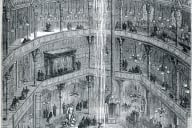You have /5 articles left.
Sign up for a free account or log in.
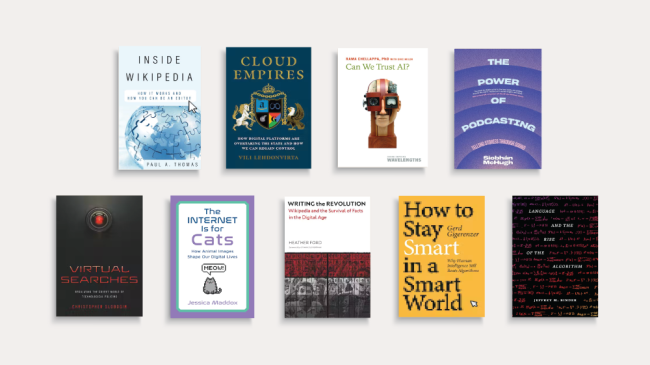
Jen Kim/Inside Higher Ed
Without making any claim to exhaustiveness, here is a brief survey of new and forthcoming books on information technology and digital media published by academic presses this fall. They range from deep historical dives to guides for the perplexed—with some critical perspectives along the way.
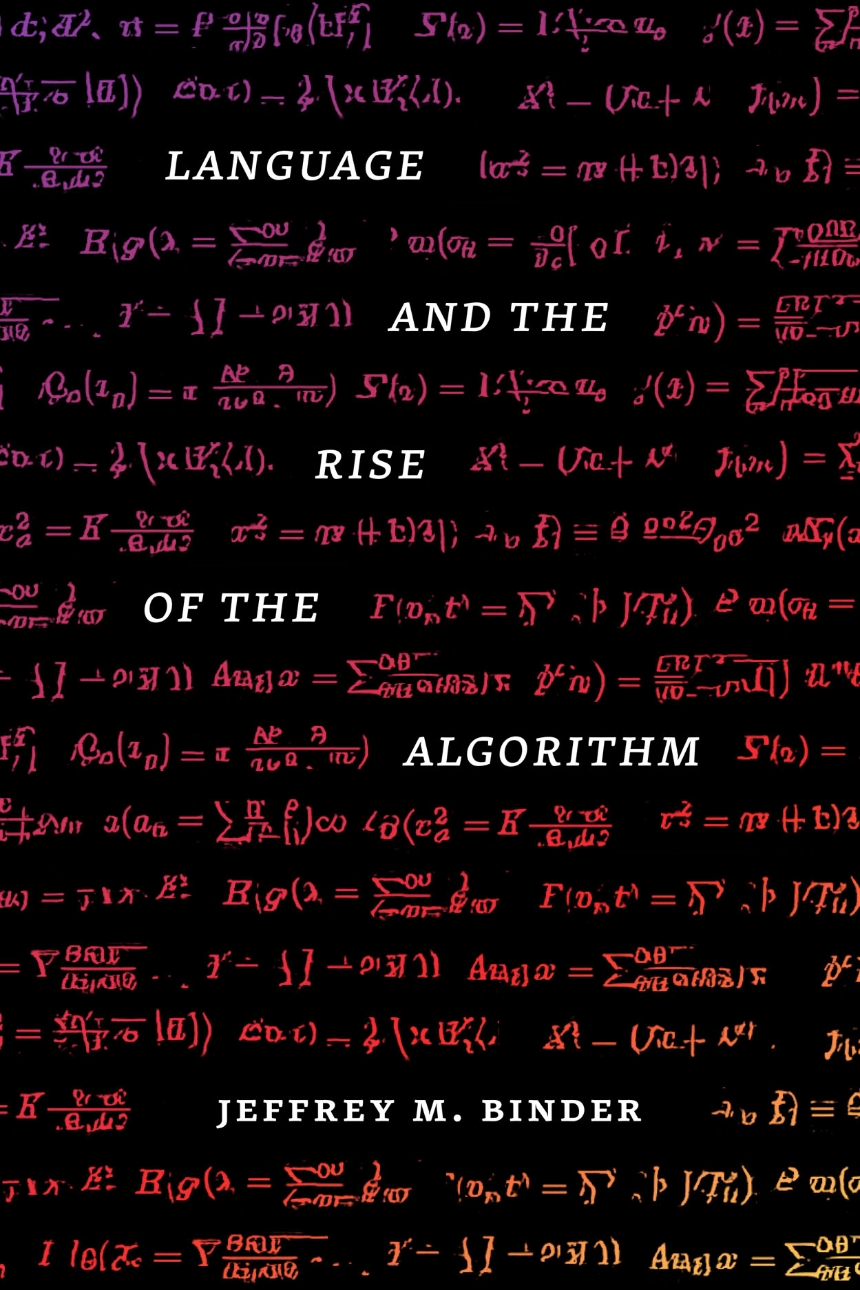 An old example of the gap between ordinary language and what computers were able to comprehend is the sentence “Time flies like an arrow; fruit flies like a banana.” It’s silly, but recognizing that silliness—the play of sense and nonsense—is essential to understanding it. Jeffrey M. Binder’s Language and the Rise of the Algorithm (University of Chicago Press, December) looks into the history of efforts to bridge the differences between communication and computation. Offering “a compelling tour of four visions of universal computation that addressed this issue in very different ways,” it incorporates Nicolas de Condorcet’s “universal algebra scheme” and the early programming language ALGOL as well as the more familiar contributions of G. W. Leibniz and George Boole. (All quotations here are taken from publishers’ catalogs or websites.)
An old example of the gap between ordinary language and what computers were able to comprehend is the sentence “Time flies like an arrow; fruit flies like a banana.” It’s silly, but recognizing that silliness—the play of sense and nonsense—is essential to understanding it. Jeffrey M. Binder’s Language and the Rise of the Algorithm (University of Chicago Press, December) looks into the history of efforts to bridge the differences between communication and computation. Offering “a compelling tour of four visions of universal computation that addressed this issue in very different ways,” it incorporates Nicolas de Condorcet’s “universal algebra scheme” and the early programming language ALGOL as well as the more familiar contributions of G. W. Leibniz and George Boole. (All quotations here are taken from publishers’ catalogs or websites.)
The age of intelligent machines is far enough along that now they, too, can groan at the time/banana conundrum. Rama Chellappa asks Can We Trust AI? (Johns Hopkins University Press, November), while Gerd Gigerenzer reassures humanity of its nonobsolescence with How to Stay Smart in a Smart World: Why Human Intelligence Still Beats Algorithms (MIT Press, August).
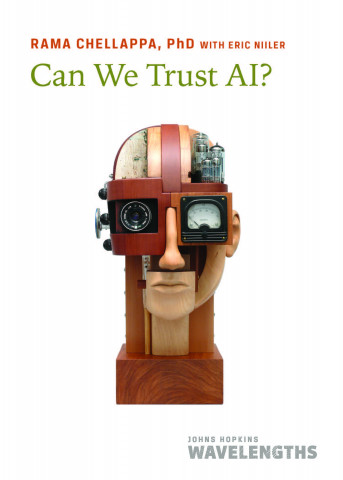 Chellappa, writing with Eric Niiler, presents artificial intelligence as a “reliable method of sifting through large sets of data that detect patterns not readily apparent through more rudimentary search tools” but acknowledges “worries about applications that amplify existing biases in business practices” and doubts concerning “the safety of self-driving vehicles.” Drawing on interviews with researchers “pushing the boundaries of AI for the world’s benefit and working to make its applications safer and more just,” Can We Trust AI? responds with a qualified affirmative.
Chellappa, writing with Eric Niiler, presents artificial intelligence as a “reliable method of sifting through large sets of data that detect patterns not readily apparent through more rudimentary search tools” but acknowledges “worries about applications that amplify existing biases in business practices” and doubts concerning “the safety of self-driving vehicles.” Drawing on interviews with researchers “pushing the boundaries of AI for the world’s benefit and working to make its applications safer and more just,” Can We Trust AI? responds with a qualified affirmative.
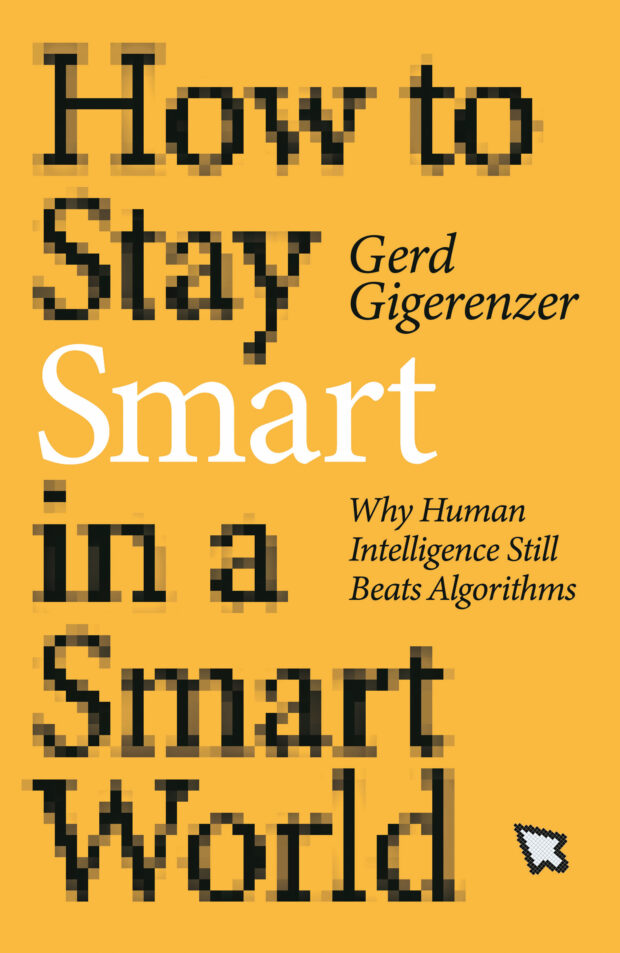 Gigerenzer sounds more tech-skeptical. The book’s description notes that boosters and doomsayers alike anticipate that “machines will soon do everything better than humans.” Presumably that will include programming themselves, sooner or later, in which case we will have engineered ourselves into oblivion. But there are limits to technological finesse. The author insists that AI innovations “are good at some things (playing chess)” yet “often fail at finding us romantic partners (love is not chess)” and are not well suited to handling “anything involving uncertainty.”
Gigerenzer sounds more tech-skeptical. The book’s description notes that boosters and doomsayers alike anticipate that “machines will soon do everything better than humans.” Presumably that will include programming themselves, sooner or later, in which case we will have engineered ourselves into oblivion. But there are limits to technological finesse. The author insists that AI innovations “are good at some things (playing chess)” yet “often fail at finding us romantic partners (love is not chess)” and are not well suited to handling “anything involving uncertainty.”
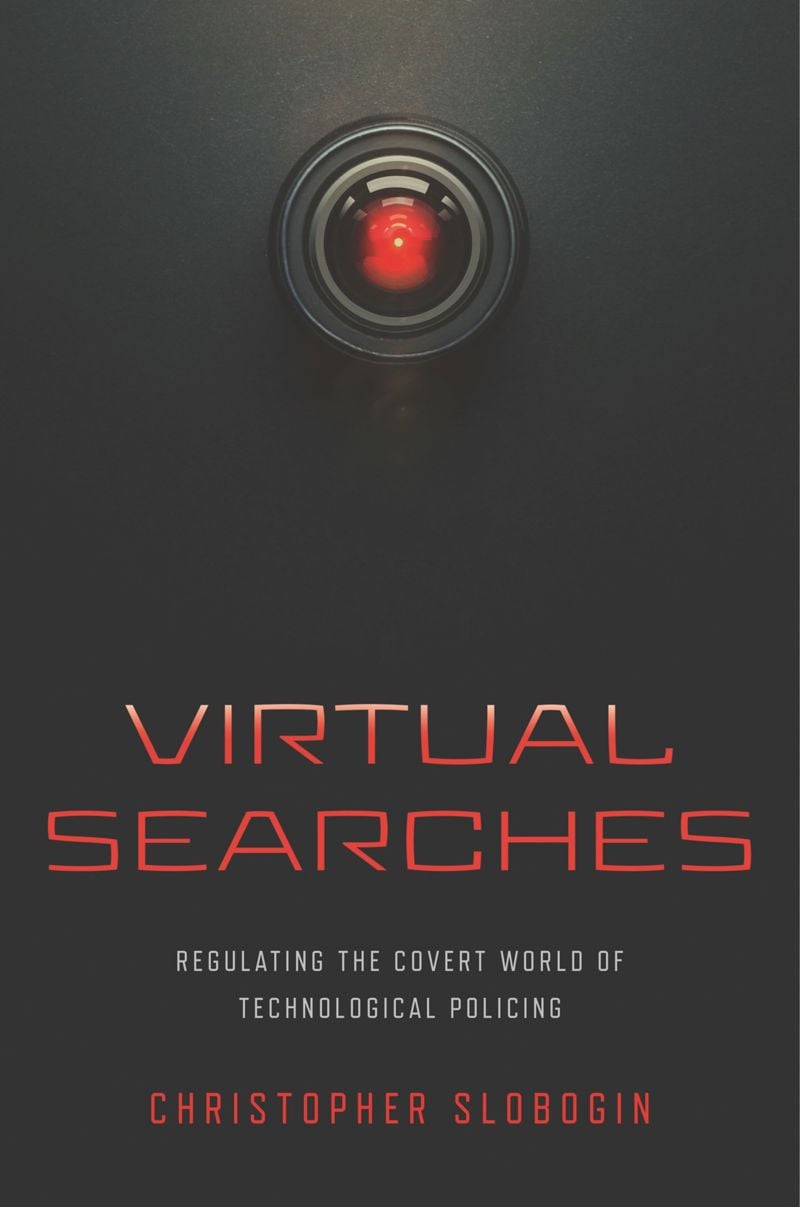 Other titles consider information technology’s impact on norms. Christopher Slobogin’s Virtual Searches: Regulating the Covert World of Technological Policing (NYU Press, October) maintains that “the traditional physical search and seizure model envisioned by the framers of the Constitution” is losing traction in a societies where “digital cameras, drones, facial recognition devices, night-vision binoculars, automated license plate readers, GPS, geofencing, DNA matching, datamining, and artificial intelligence” have grown commonplace. The volume proposes “a useful typology for sorting through this bewildering array of old, new, and soon-to-arrive policing techniques” in the interest of “expand[ing] the Fourth Amendment’s privacy protections without blindly imposing its warrant requirement”—seeing to it that “police are held accountable for their use of technology without denying them the increased efficiency it provides in their efforts to protect the public.”
Other titles consider information technology’s impact on norms. Christopher Slobogin’s Virtual Searches: Regulating the Covert World of Technological Policing (NYU Press, October) maintains that “the traditional physical search and seizure model envisioned by the framers of the Constitution” is losing traction in a societies where “digital cameras, drones, facial recognition devices, night-vision binoculars, automated license plate readers, GPS, geofencing, DNA matching, datamining, and artificial intelligence” have grown commonplace. The volume proposes “a useful typology for sorting through this bewildering array of old, new, and soon-to-arrive policing techniques” in the interest of “expand[ing] the Fourth Amendment’s privacy protections without blindly imposing its warrant requirement”—seeing to it that “police are held accountable for their use of technology without denying them the increased efficiency it provides in their efforts to protect the public.”
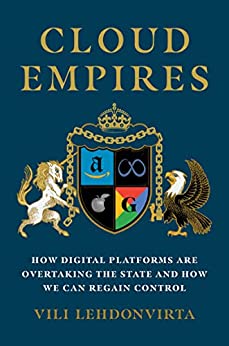 Vili Lehdonvirta’s Cloud Empires: How Digital Platforms Are Overtaking the State and How We Can Regain Control (MIT Press, September) looks back on the bad old days of the cyber-agora: “a lawless place, populated by scam artists who made buying or selling anything online risky business.” The risk has declined under the watchful eyes of the tech giants (e.g., Apple and Amazon) with their “secure digital platforms for selling physical goods, crowdsourcing labor, and downloading apps.” Life online has gone from the state of nature to the reign of big-platform Leviathans exercising “statelike dominance over our lives,” ruled “by Silicon Valley despots with little or no accountability.” Efforts by government to challenge their power have not been conspicuously successful, thus far.
Vili Lehdonvirta’s Cloud Empires: How Digital Platforms Are Overtaking the State and How We Can Regain Control (MIT Press, September) looks back on the bad old days of the cyber-agora: “a lawless place, populated by scam artists who made buying or selling anything online risky business.” The risk has declined under the watchful eyes of the tech giants (e.g., Apple and Amazon) with their “secure digital platforms for selling physical goods, crowdsourcing labor, and downloading apps.” Life online has gone from the state of nature to the reign of big-platform Leviathans exercising “statelike dominance over our lives,” ruled “by Silicon Valley despots with little or no accountability.” Efforts by government to challenge their power have not been conspicuously successful, thus far.
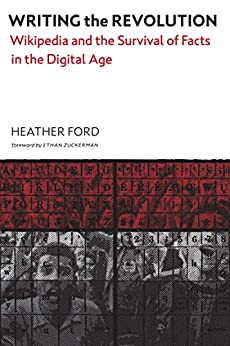 Meanwhile, one noncommercial but well-branded information source has acquired significant authority. Heather Ford’s Writing the Revolution: Wikipedia and the Survival of Facts in the Digital Age (MIT Press, November) reconstructs how “an encyclopedia built on neutrality, authority, and crowd-sourced consensus” has responded to dramatic events in real time. Her specific object of study, the entry on the Egyptian Revolution of 2011, has “evolved over the course of a decade, both shaping and being shaped by the Revolution as it happened.” Her case study explores “how Wikipedia’s so-called consensus is arrived at; who has the power to write dominant histories and which knowledges are actively rejected; how these battles play out across the chains of circulation in which data travel; and whether history is now written by algorithms.”
Meanwhile, one noncommercial but well-branded information source has acquired significant authority. Heather Ford’s Writing the Revolution: Wikipedia and the Survival of Facts in the Digital Age (MIT Press, November) reconstructs how “an encyclopedia built on neutrality, authority, and crowd-sourced consensus” has responded to dramatic events in real time. Her specific object of study, the entry on the Egyptian Revolution of 2011, has “evolved over the course of a decade, both shaping and being shaped by the Revolution as it happened.” Her case study explores “how Wikipedia’s so-called consensus is arrived at; who has the power to write dominant histories and which knowledges are actively rejected; how these battles play out across the chains of circulation in which data travel; and whether history is now written by algorithms.”
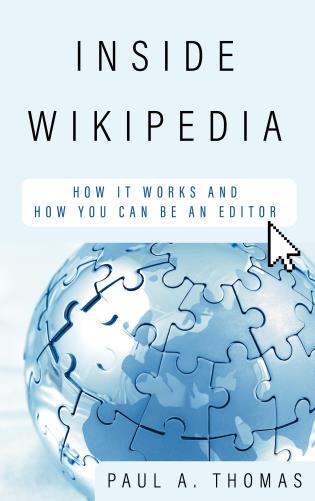 Other authors scan the landscape of digital society less as critics than as informed practitioners. With Inside Wikipedia: How It Works and How You Can Be an Editor (Rowman & Littlefield, September), Paul A. Thomas—“a seasoned Wikipedia contributor who has accrued almost 60,000 edits since he started editing in 2007”—invites the reader to join him as a colleague on “the largest, most comprehensive knowledge base the world has ever seen.” Wikipedia is not the free-for-all it once was, and Thomas’s guide clarifies the process of establishing one’s editorial credentials within the system.
Other authors scan the landscape of digital society less as critics than as informed practitioners. With Inside Wikipedia: How It Works and How You Can Be an Editor (Rowman & Littlefield, September), Paul A. Thomas—“a seasoned Wikipedia contributor who has accrued almost 60,000 edits since he started editing in 2007”—invites the reader to join him as a colleague on “the largest, most comprehensive knowledge base the world has ever seen.” Wikipedia is not the free-for-all it once was, and Thomas’s guide clarifies the process of establishing one’s editorial credentials within the system.
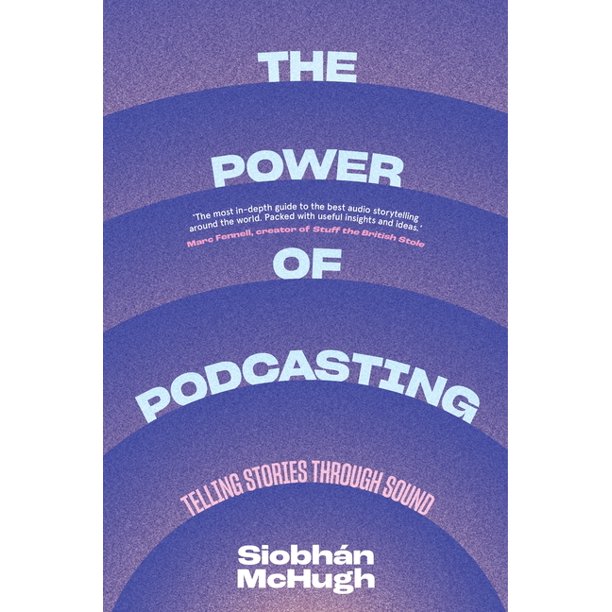 Another guide for the aspiring content creator is Siobhán McHugh’s The Power of Podcasting: Telling Stories Through Sound (Columbia University Press, October). Drawing on the author’s experience as a podcast producer, the book “dissects what makes a good podcast and outlines how you can create one yourself.”
Another guide for the aspiring content creator is Siobhán McHugh’s The Power of Podcasting: Telling Stories Through Sound (Columbia University Press, October). Drawing on the author’s experience as a podcast producer, the book “dissects what makes a good podcast and outlines how you can create one yourself.”
Finally, a book that considers the other AI in depth—ailurophile iconography, that is. Jessica Maddox’s The Internet Is for Cats: How Animal Images Shape Our Digital Lives (Rutgers University Press, October) “combines observations and textual analysis with extensive interviews of the people who create, post and share animal media,” a category exemplified, though not exhausted, by kitty pictures. “What 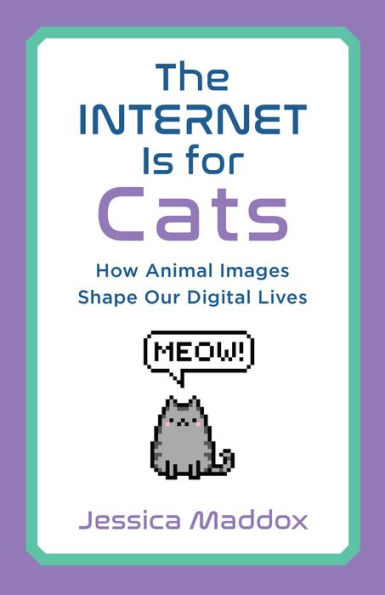 motivates people to make and share these images,” the book asks, “and how do they relate to other online social practices?” Well, they “create a lighter, more playful mood, uniting users within online spaces that can otherwise easily become fractious and toxic.” Our species bonded with cats millennia ago thanks to their hunting of rodents. Perhaps the feline role now extends to keeping the troll population under control.
motivates people to make and share these images,” the book asks, “and how do they relate to other online social practices?” Well, they “create a lighter, more playful mood, uniting users within online spaces that can otherwise easily become fractious and toxic.” Our species bonded with cats millennia ago thanks to their hunting of rodents. Perhaps the feline role now extends to keeping the troll population under control.




